Radius, extraarticular, oblique - Lag screw
1. Principles
Lag screw principles
In oblique fractures of the radial neck, fixation is achieved by lag screws. Longer oblique fractures allow two screws. This is more secure, and should be preplanned.
The thread pulls the opposite bone fragment towards the head of the screw, placing the fracture ends under compression. The portion of the thread in the gliding hole does not purchase in the surrounding bone. Insert the lag screw(s) as perpendicularly to the fracture plane as possible.
Note: Lag screw fixation may prove unsatisfactory for short oblique fractures of the radial neck. If so, plate fixation may be required.
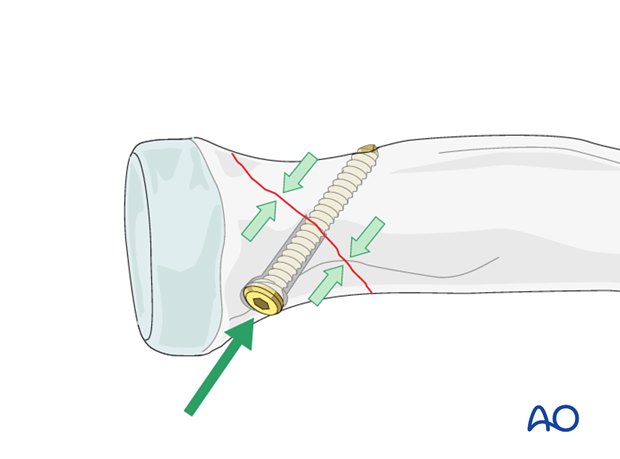
Choice of implant
1.5 mm, 2.0 mm, 2.4 mm or 2.7 mm screws are used.
2. Reduction and provisional fixation
Expose the fracture ends with minimal soft tissue dissection off the bone. Irrigate to remove debris and interposing tissues.
Reduction is direct, aided by supination-pronation of the forearm. Reduce and provisionally fix the fracture with the help of small pointed reduction forceps.
If reduction is difficult to achieve without subluxation, rule out ulnar malreduction as the cause.
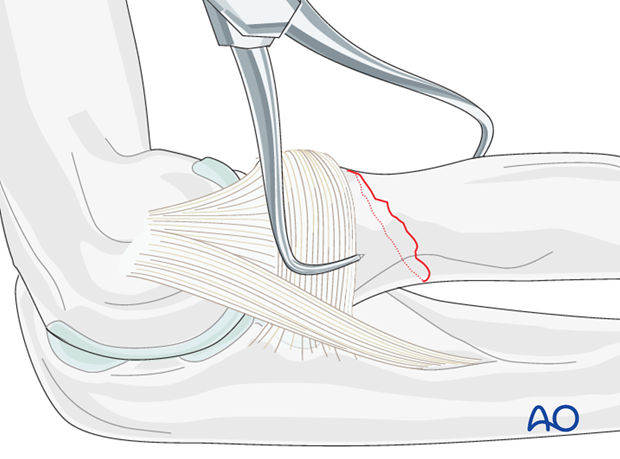
3. Lag screw insertion
Drilling
Drill a gliding hole (sized according to chosen screw size, see fig.) for the lag screw into the proximal fragment.
Insert the appropriate drill sleeve into the gliding hole until it reaches the far cortical bone.
Now drill the far cortex with the appropriate drill bit.
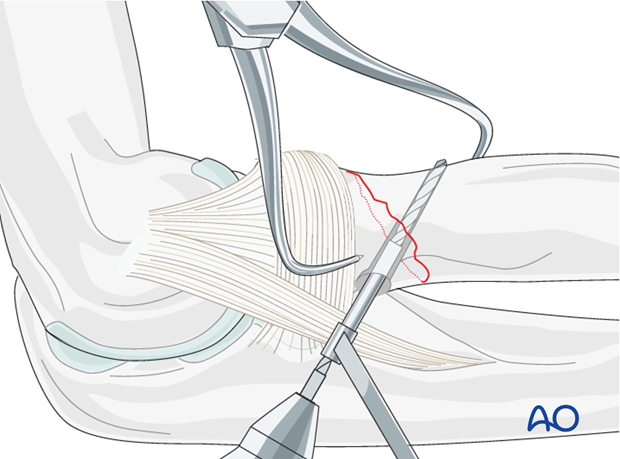
Measuring
Measure the depth of the hole with the hook of the depth gauge pointing distally.
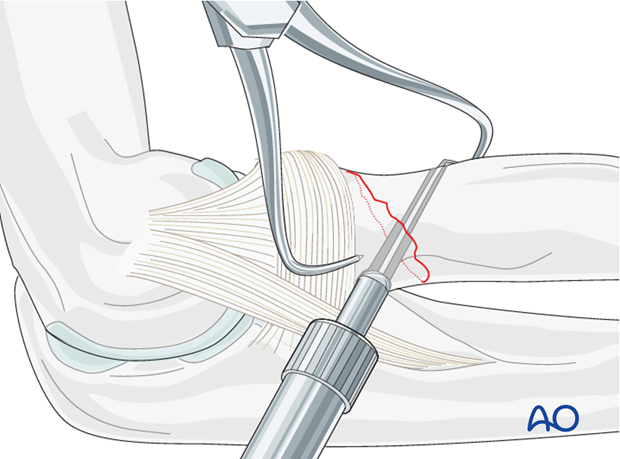
Closely observe the compression effect on the fracture line while tightening the lag screw.
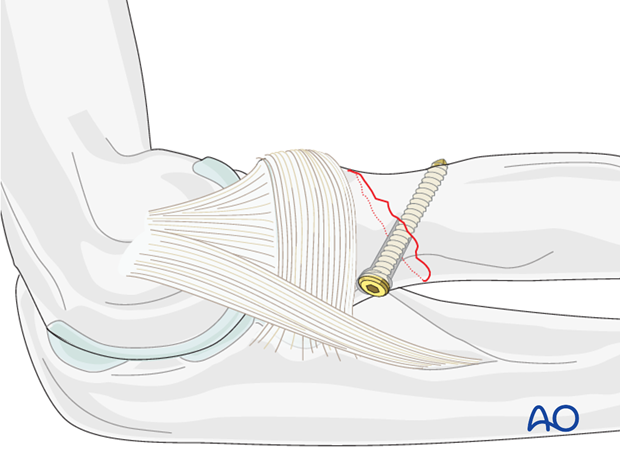
Second lag screw
If the fracture configuration allows the insertion of a second lag screw, it can be inserted now, using the same technique as described above.
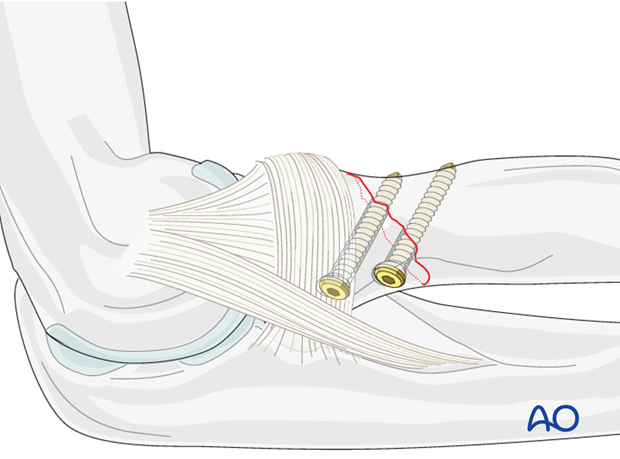
4. Final assessment
Finally, assess the range of motion in pronation, supination, flexion and extension. Fixation should be stable and crepitus or restricted motion should be absent. Radiocapitellar and ulnohumeral joints should remain located through a full range of motion.
Check fracture and screws with image intensifier or x-ray.













